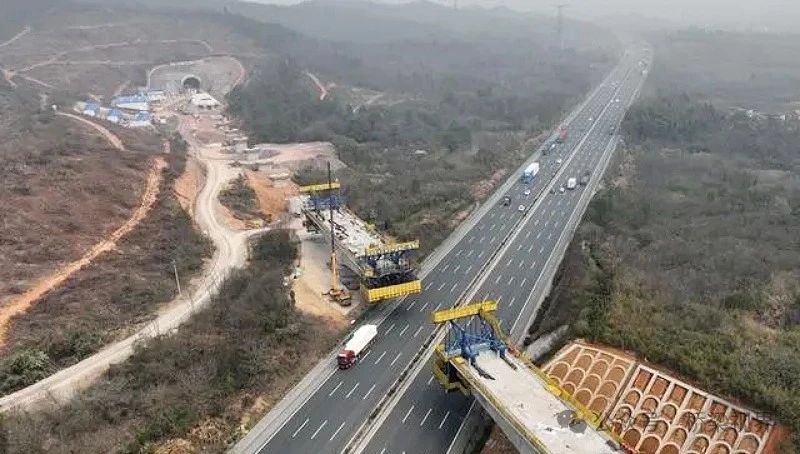On March 15th, the Lushan bridge group of the newly constructed Beijing-Gangkou High-Speed Railway’s Jiujiang to Nanchang section (referred to as the Chang-Jiu High-Speed Railway) carried out construction spanning the Hangzhou-Ruijin Expressway for the first time. On that day, the bridge group successfully spanned the Hangzhou-Ruijin Expressway for the first time.

It is understood that the Lushan bridge group of the Chang-Jiu High-Speed Railway refers to the 6 bridges spanning existing lines or adjacent to existing lines that branch out from the south end of Lushan Station. These 6 bridges span the operating lines of Lushan Station, the Wuhan-Jiujiang Passenger Dedicated Line, the Wuhan-Jiujiang Railway, the Beijing-Jiujiang Railway, the Changsha-Jiujiang Intercity Railway, and the Hangzhou-Ruijin Expressway. The Lushan bridge group of the Chang-Jiu High-Speed Railway will span existing railways 11 times, span newly constructed railway connecting lines twice, and span the Hangzhou-Ruijin Expressway 5 times. As of now, the construction of the other 4 spans across the Hangzhou-Ruijin Expressway by the Lushan bridge group of the Chang-Jiu High-Speed Railway is progressing rapidly.
The Chang-Jiu High-Speed Railway is an important part of the Beijing-Gangkou (Taiwan) corridor, one of China’s “Eight Vertical and Eight Horizontal” high-speed rail main corridors. Starting from Jiujiang City in the north, it runs southward through Lushan City, Gongqingcheng City, Yongxiu County, Changbei Airport, and terminates in Nanchang City. The entire line is 138 kilometers long, with a designed speed of 350 kilometers per hour. There are 59 bridges spanning 92 kilometers and 21 tunnels spanning 19 kilometers on the line, with a bridge-tunnel ratio of 82.19%.
